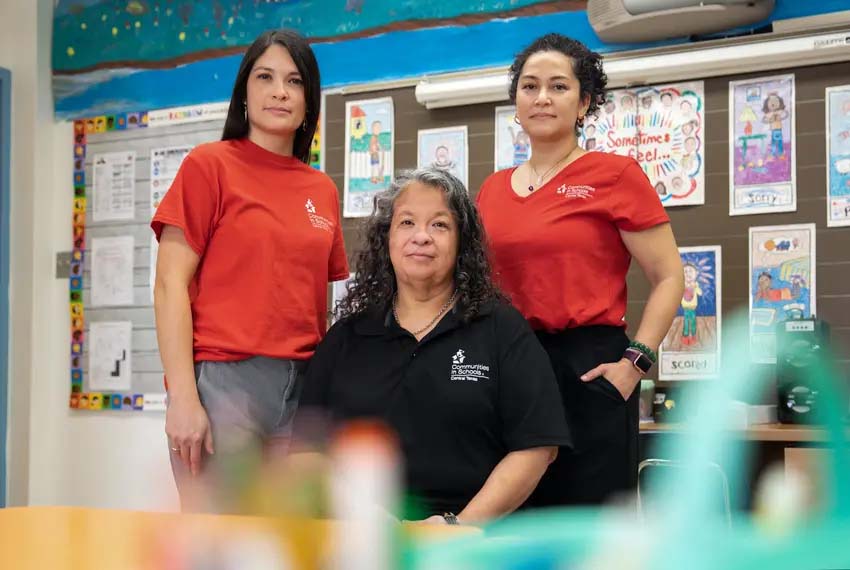In 2016, red flags were raised about the future of the Texas mental health care workforce.
The Texas Statewide Behavioral Health Strategy Plan said seven years ago that “more than 80% of Texas counties are identified as Mental Health Professional Shortage Areas, which are defined as having more than 30,000 residents per clinician.” Many of the most knowledgeable and capable professionals are getting close to retirement. Texas’ higher education institutions have not been able to graduate as many students as needed to satisfy demand.
Still, no one saw the global pandemic coming, which led to months of lockdowns and restrictions on public life. This made Texas and the rest of the country look for ways to deal with the fear and sadness that followed. Republicans and Democrats have both arrived at the same conclusion: Mental health services need to be upgraded and expanded. This is rare in a country like the United States.
In November of 2020, the U.S. “Given the enduring mental health difficulties brought on by COVID-19, there could not be a more critical time to boost our nation’s mental health resources,” said Sen. John Cornyn, R-Texas.
President Joseph Biden declared last fall, after pledging millions of dollars in additional financing for state mental health services, “Mental health touches all of us.”
After a teenage school gunman killed 19 students and two adults in Uvalde last summer, the clamour for gun control resurfaced in Texas.
Gov. Greg Abbott stated in his inaugural speech last month that “we must give mental health assistance to children who need it.”
Texas House Speaker Dade Phelan is advocating for a more than $100 million mental health and school safety package, with over half of that amount set aside for programmes for children. More than a million dollars are anticipated to be invested in a range of programmes for all Texans.
According to Mental Health America, a nonprofit advocacy organization, Texas ranks 33rd in adult care and dead last in children’s mental health service access. The state has a lot of work to do to increase the number of experts needed to provide these anticipated additional services.
The federal government has said that there are not enough mental health professionals in 98 percent of Texas’s 254 counties.
How This Occurred
Dr. Sarah Martin, a psychiatrist and the medical director of the Texas Child Mental Health Care Consortium, said, “We really never kept up with the demand.” “The pandemic just shattered the taboo surrounding mental health, and it happened so quickly that there are incredibly huge waiting lists for therapists,”
Everyone from Texas who has attempted to get an appointment with a mental health professional in the previous three years knows that waitlists can be more than six or seven months long. When the system started to become overburdened with requests for treatment, several therapists had to completely stop accepting new patients.
According to Michelle Alletto, chief program and services officer for Texas Health and Human Services, “the pandemic exacerbated existing shortages in behavioral health clinicians at every level of the mental health continuum, including our state hospitals, private psychiatric hospitals, and local mental health authorities” earlier this week.
The highest echelons of the mental health system are affected by workforce difficulties. Due to a lack of staff, more than 700 of Texas’ 2,911 budgeted state psychiatric hospital beds are currently unavailable, according to Texas Health and Human Services authorities. State hospitals had 5,987 full-time staff as of December 31, down from 7,409 full-time workers in 2019.
The lack of therapists, psychiatrists, and psychologists has an impact on several government agencies. Those with mental illnesses who are detained and require treatment prior to trial have been reported to experience lengthy waits in a number of county jails, including those in Dallas and Houston. More than 2,000 inmates in Texas jails and prisons were on the waiting list for a bed in the state hospital system earlier this year.
Also, as a large number of therapists, psychologists, and psychiatrists approach retirement, the labor gap is predicted to get worse. Officials from a Texas organization claim that there aren’t enough recent graduates and younger professionals leaving colleges and universities to take their place.
Marriage and family therapists, licensed counselors, psychologists, and social workers are all subject to the Texas Behavioral Health Executive Council’s regulation of mental health licensure. The overall number of professionals having licenses issued by the council increased little from the previous year to 80,546 licenses, with 75,327 of those license holders being deemed “active.” There were 74,890 license holders two years ago, with 69,729 of them being deemed active.
Despite this expansion, according to the council’s executive director, Darrel Spinks, the market is becoming fully oversaturated. Applicants for Texas licensure must complete internships and a predetermined length of time under the supervision of a supervisor before being allowed to work independently, according to him.
According to Spinks, there aren’t enough individuals entering the building to meet the number of people leaving.
The number of providers ready to train graduates who are pursuing their licenses is also shrinking, which is a problem for the state. This hesitancy is caused in part by worries about responsibility.
Hence, Spinks remarked, “Training programs can’t produce enough people, and if we get one out, we don’t have enough internships or postdoc sites.” This also reduces the pool of candidates for full licensure as mental health providers.
During this legislative session, there are a number of plans to try to fix some of the problems caused by an overworked mental health workforce.
Both House Bills 1211 and 1551 would help mental health providers who meet certain criteria pay back their loans. If there is a dearth of competent candidates, House Bill 2361 would allow school districts to request a waiver and hire a licensed master social worker in place of a non-physician mental health practitioner.
The personnel shortfall will be addressed by these measures and others, but there is also the problem of burnout among those already working in the mental health sector.
The work itself is difficult. “Nobody arrives at your office smiling,” Spinks stated.
Burnout And Stress Among Employees
Victoria Alicia Torres, a Houston native and first-generation college student, has always been attracted to mental health, but she thought about leaving the subject during the pandemic.
There were times when she felt overworked and stressed out, and she said it drained her physically and emotionally.
As a graduate student during the pandemic, she said that sometimes the number of people she had to see in person was too much.
It made her pause and consider whether she would still want to pursue this kind of work if she were very ill as a result of social interaction.
Torres was able to keep himself motivated, but that isn’t always the case.
“Every healthcare professional should be concerned with their own well-being and satisfaction,” said Dr. Jeffrey Khan, a psychiatrist and medical director at Houston’s Baylor Psychiatric Center. He compared it to putting on your own oxygen mask before helping someone else on a plane.
Also, the increased financial strain and the tense political environment, according to mental health doctors, are factors in professional burnout.
Payment is another major concern for Texas’s healthcare providers.
The nation’s taxpayer-funded health care program, Medicaid, offers some of the lowest paid-per-session reimbursement rates to low-income patients who are eligible. Private insurance operates in a similar manner. Many mental health providers have changed to a cash-only approach as a result of this.
If you can’t make money from your profession, you won’t pursue it. “Everyone in the business has the desire to help others, but you don’t want to be in a desperate situation,” Spikes added.
Christy Mitchell, a Communities in Schools project manager at Jane Langford Elementary School in southeast Austin, said she can’t hold those who choose to leave the industry responsible.
Mitchell said that it can be hard to keep up goodwill and maybe even self-sacrifice all the time.
In Texas, a state where around 40% of the population is Hispanic, 39% are white, 12% are black, and 5% are Asian, there is a rising ethnic imbalance when it comes to the geographic distribution of mental health specialists. Yet, a state survey conducted this year found that 2,873 respondents, or around 85%, identified as white.
Only 20% of respondents, according to the poll, offered mental health care in languages other than English. Also, more than half of those who provide mental health services are found in cities like Harris, Dallas, Tarrant, Bexar, and Travis counties.
Ultimately, industry experts argue, a stronger overall state strategy and a larger recruitment drive are required.



